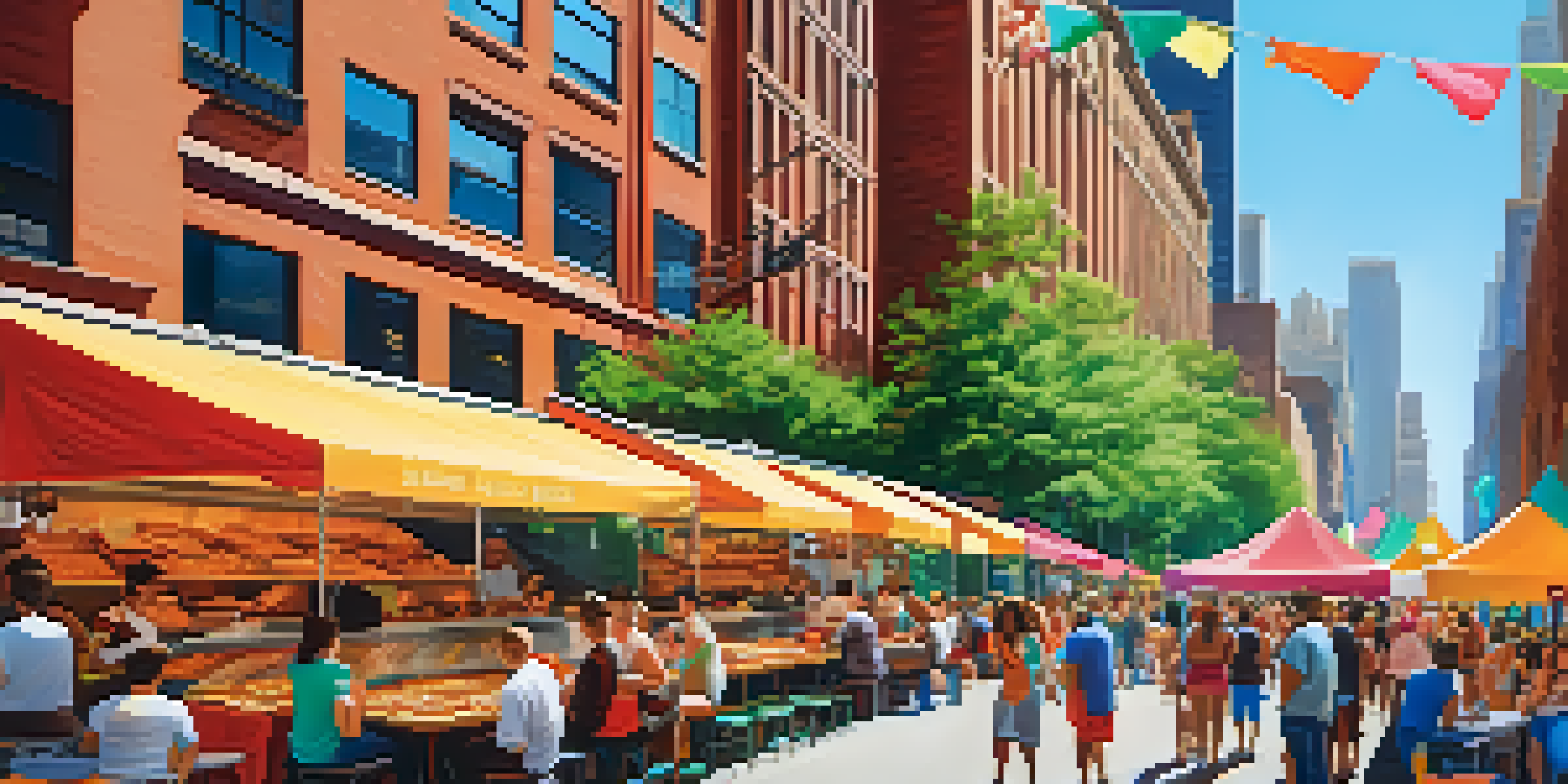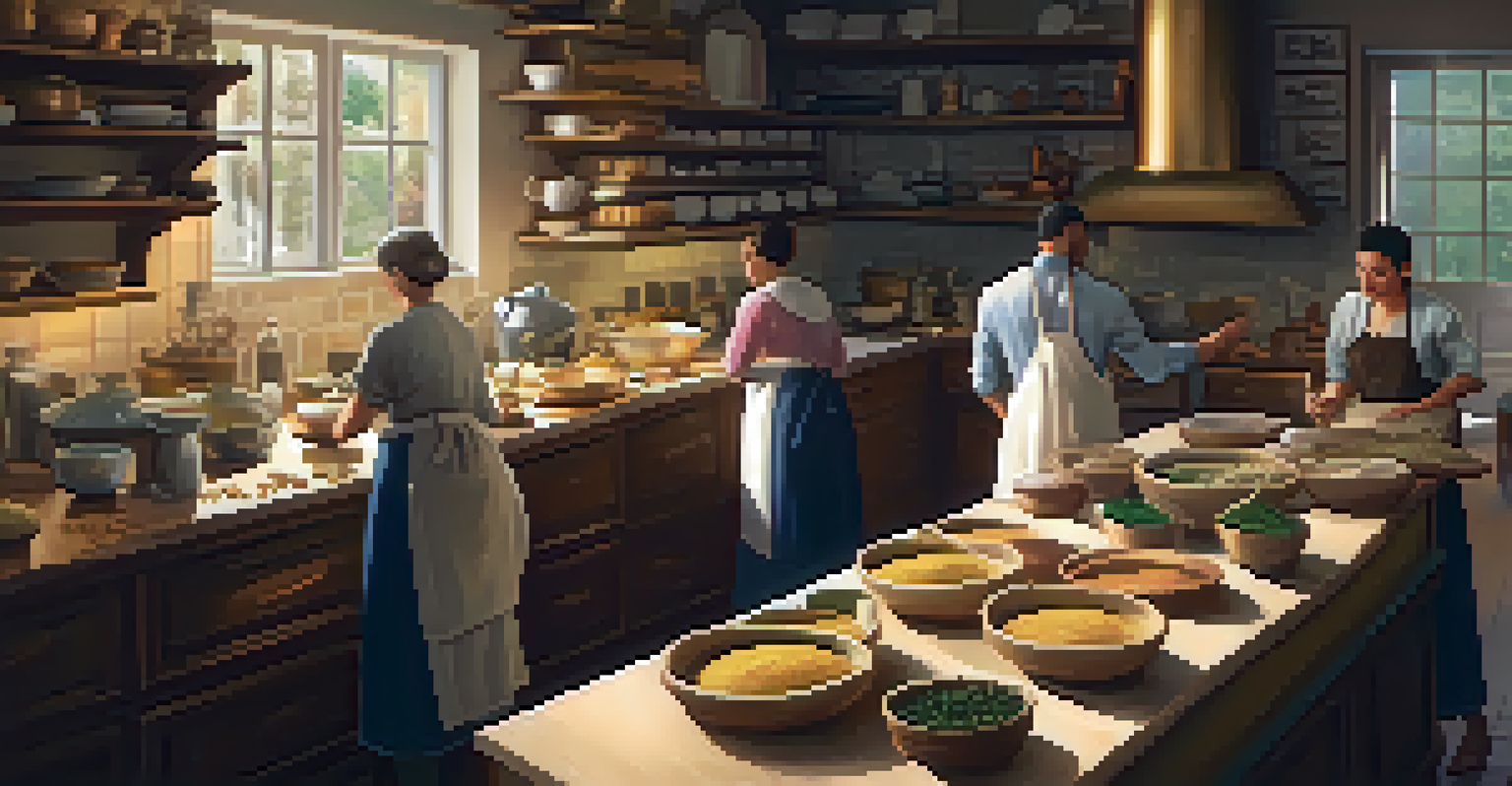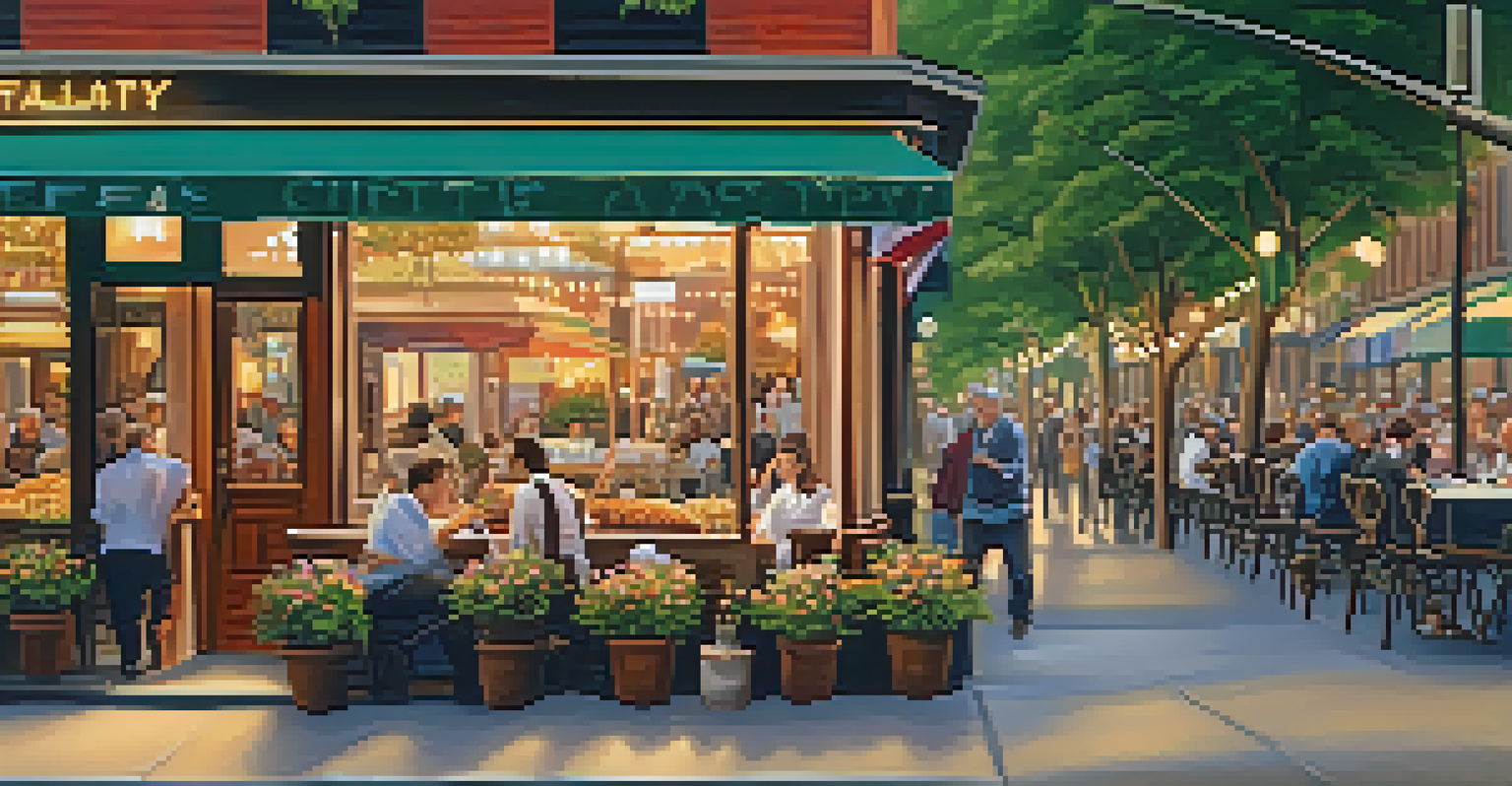Culinary Tourism: A Gateway to NYC's Rich Cultural Heritage

Understanding Culinary Tourism and Its Impact
Culinary tourism is more than just eating; it's about experiencing a culture through its food. This growing trend invites travelers to explore a city's culinary landscape, tasting flavors that tell stories of heritage and tradition. In New York City, this means diving into a melting pot of cuisines, from Italian to Indian, each reflecting the city's rich immigrant history.
Food is our common ground, a universal experience.
As visitors sample dishes from various cultures, they gain insights into the lives and customs of the communities behind them. For instance, a bite of dim sum might lead to a conversation about the Chinese community’s history in Manhattan's Chinatown. This personal connection makes culinary tourism a unique way to appreciate the city's diversity.
Moreover, culinary tourism stimulates local economies, supporting not just restaurants but also farmers, markets, and artisans. It's a win-win: travelers get to indulge in unforgettable flavors while local businesses thrive, ensuring that the cultural heritage of NYC continues to flourish.
The Role of Food Festivals in NYC's Culinary Scene
Food festivals are a vibrant aspect of NYC’s culinary tourism, showcasing the city's diverse cuisines in a celebratory atmosphere. Events like Smorgasburg or the NYC Wine and Food Festival attract thousands, offering everything from gourmet bites to local craft beers. These festivals not only draw in tourists but also create a communal experience for locals to enjoy.

At these gatherings, attendees can sample dishes from food trucks, pop-up restaurants, and renowned chefs, all in one place. Picture savoring a slice of artisanal pizza while listening to live music in the heart of Brooklyn. It’s an experience that encapsulates the spirit of NYC—dynamic, flavorful, and full of life.
Culinary Tourism Enriches Culture
Culinary tourism allows travelers to explore and appreciate the cultural heritage of a city through its diverse food offerings.
Additionally, food festivals often highlight cultural history, with many vendors sharing the stories behind their recipes. This storytelling aspect enriches the experience, providing visitors with a deeper appreciation of the culinary art and its origins, further intertwining food with cultural heritage.
Exploring Iconic Neighborhoods Through Food
Each neighborhood in NYC offers a distinct culinary experience that reflects its cultural roots. For example, a stroll through Little Italy reveals classic pasta dishes and cannoli, while a walk in Jackson Heights introduces you to the vibrant flavors of South Asian cuisine. These neighborhoods serve as living museums, where food plays a central role in preserving and showcasing cultural identity.
You don’t have to cook fancy or complicated masterpieces—just good food from fresh ingredients.
Engaging in food tours allows visitors to delve deeper into these communities. Guided tours often include stops at local eateries, markets, and even street vendors, providing firsthand knowledge about the dishes and the people who make them. This immersive approach fosters a connection between visitors and the neighborhoods they explore.
Moreover, discovering food in these neighborhoods often leads to unexpected finds, like a hidden gem of a restaurant that has been serving family recipes for generations. Such experiences create lasting memories and a deeper understanding of the cultural significance behind each bite.
Culinary Classes: Learning Through Flavor
Participating in culinary classes is another fantastic way to experience NYC's cultural heritage. These classes allow visitors to learn how to prepare traditional dishes from experienced chefs, often in intimate settings. From pasta-making in an Italian kitchen to mastering sushi in a Japanese culinary school, each class offers a hands-on approach to cultural learning.
Beyond cooking techniques, these classes often include stories about the origins of the dishes, the ingredients used, and the cultural practices surrounding meals. Imagine kneading dough while listening to tales of how pasta has been made for centuries in Italy—such insights deepen appreciation for the food and its cultural context.
Food Festivals Celebrate Diversity
Food festivals in NYC showcase various cuisines and foster a communal spirit, enhancing the culinary experience for both tourists and locals.
Additionally, culinary classes often foster connections among participants. Bonding over shared experiences in the kitchen can lead to meaningful conversations about food, culture, and personal stories. This communal aspect enhances the overall experience, making it not just a lesson in cooking but also a celebration of cultural exchange.
The Influence of Immigrant Communities on NYC's Cuisine
New York City’s culinary landscape is heavily shaped by its immigrant communities, each contributing unique flavors and traditions. From the Jewish delis of the Lower East Side to the Caribbean food stalls in Flatbush, these communities have infused their heritage into the city’s dining scene. The result is a rich tapestry of flavors that reflects the city’s multicultural identity.
As these communities share their culinary practices, they also invite others to partake in their traditions. This cross-cultural exchange often leads to fusion dishes that blend elements from different cuisines, illustrating how food can bring people together. For instance, the popularity of tacos al pastor is a direct result of Mexican and Lebanese influences in NYC.
Moreover, many immigrant-owned restaurants serve as cultural hubs, where generations gather to celebrate their heritage through food. By dining at these establishments, visitors not only enjoy delicious meals but also support the preservation of these rich cultural narratives within the city.
Spotlight on NYC's Diverse Culinary Icons
New York City is home to numerous culinary icons that represent its diverse food scene. Think of the classic New York bagel, the beloved slice of pizza, or the iconic New York cheesecake. Each of these dishes tells a story about the city’s history and its people, making them essential to the NYC culinary experience.
Many of these culinary staples have roots in the immigrant communities that shaped the city. For example, the bagel, often associated with Jewish culture, has become a ubiquitous breakfast item for New Yorkers of all backgrounds. By enjoying these dishes, visitors partake in a shared cultural narrative that transcends individual backgrounds.
Immigrant Communities Shape Cuisine
The rich culinary landscape of NYC is greatly influenced by immigrant communities, each contributing unique flavors and traditions.
Additionally, NYC's culinary icons often inspire local chefs to experiment and innovate. This creative spirit keeps the food scene fresh and exciting, with new interpretations of classic dishes emerging regularly. Whether it’s a gourmet twist on a street food favorite or a modern take on a traditional recipe, NYC continually evolves its culinary landscape.
Challenges and Opportunities in Culinary Tourism
While culinary tourism in NYC thrives, it also faces challenges. Rising costs of living and gentrification can lead to the displacement of long-standing eateries, threatening the cultural heritage they represent. As beloved restaurants close their doors, the rich stories and traditions they embody risk being lost in the city's rapidly evolving landscape.
However, these challenges also present opportunities for innovation and advocacy. Many organizations and community groups work tirelessly to support local businesses and preserve culinary traditions. By raising awareness about the importance of these establishments, they encourage both locals and tourists to support authentic culinary experiences.

Additionally, culinary tourism can be harnessed as a tool for education and cultural exchange. By promoting diverse cuisines and the stories behind them, NYC can foster greater understanding and appreciation of its multicultural heritage. This not only enriches the visitor experience but also strengthens the bonds within the community.